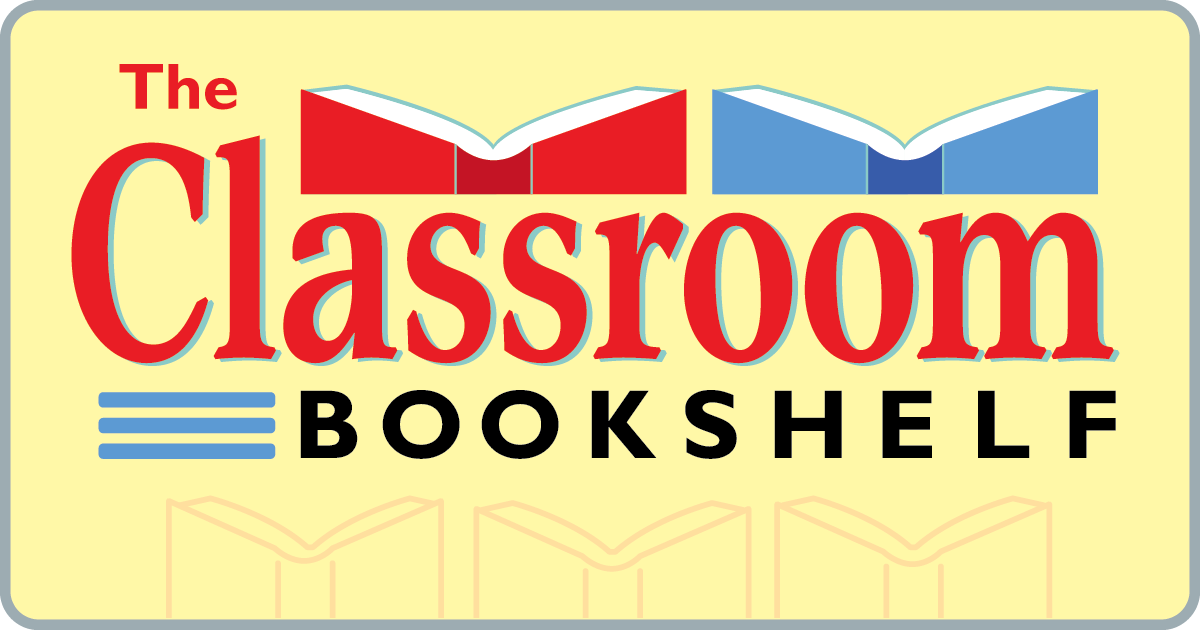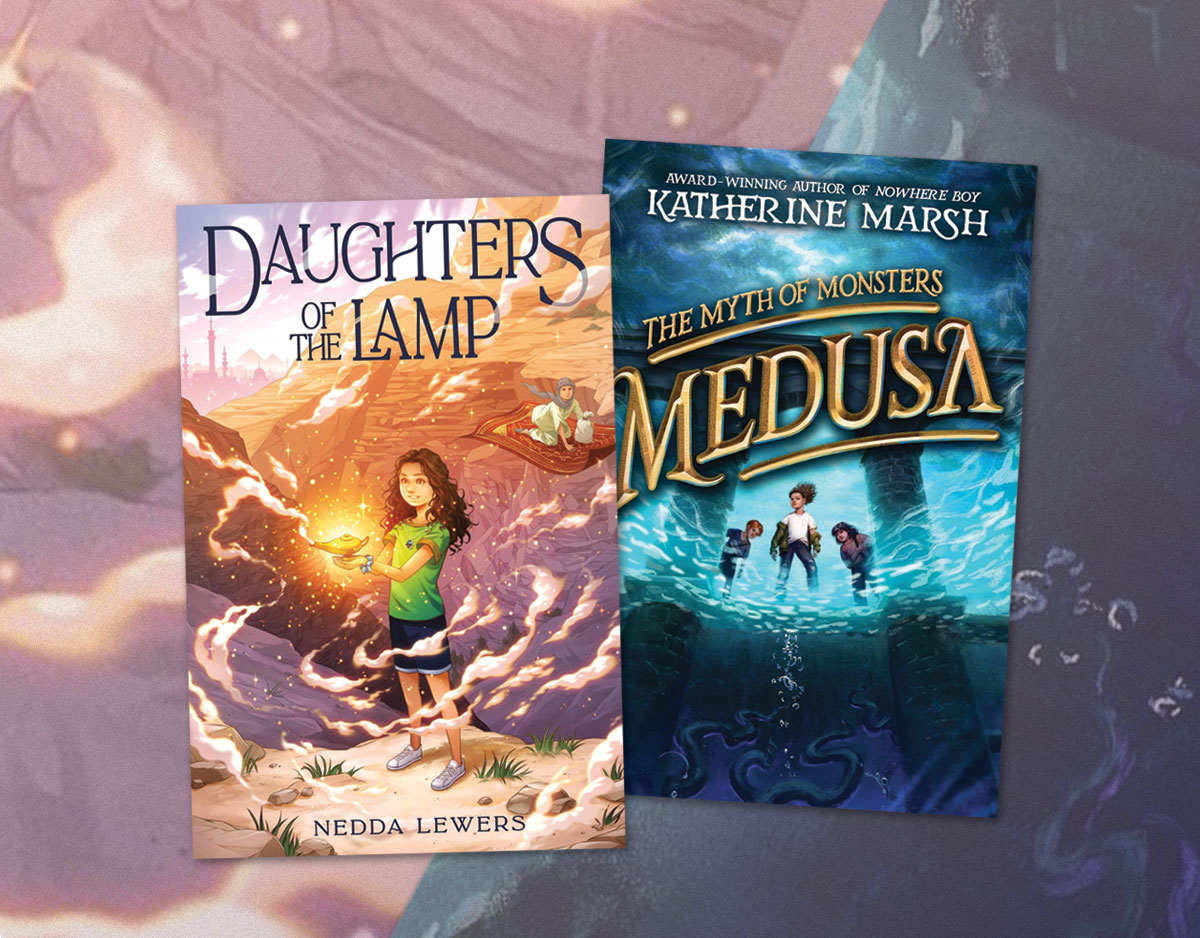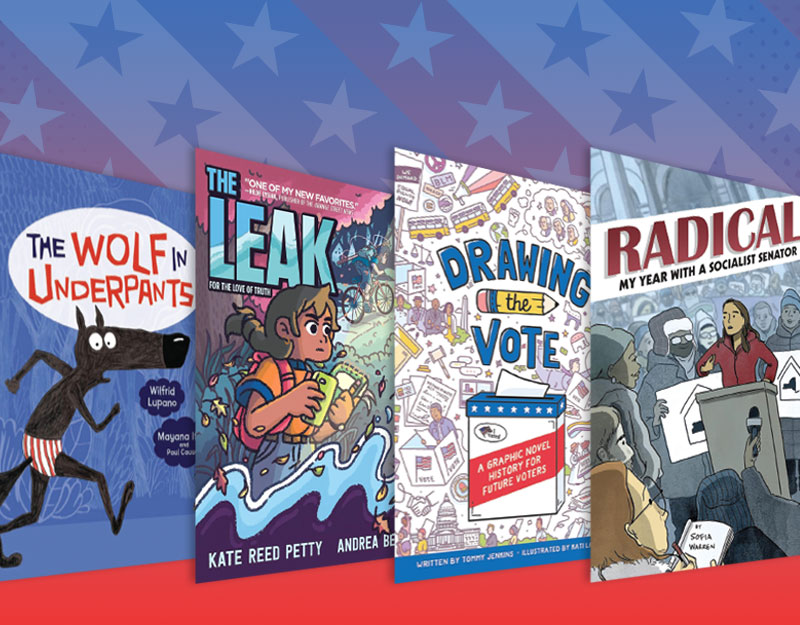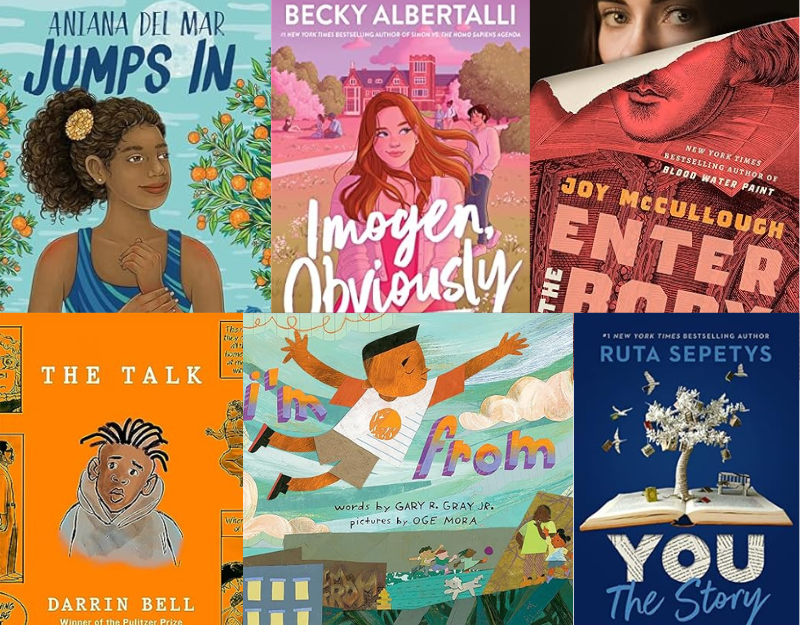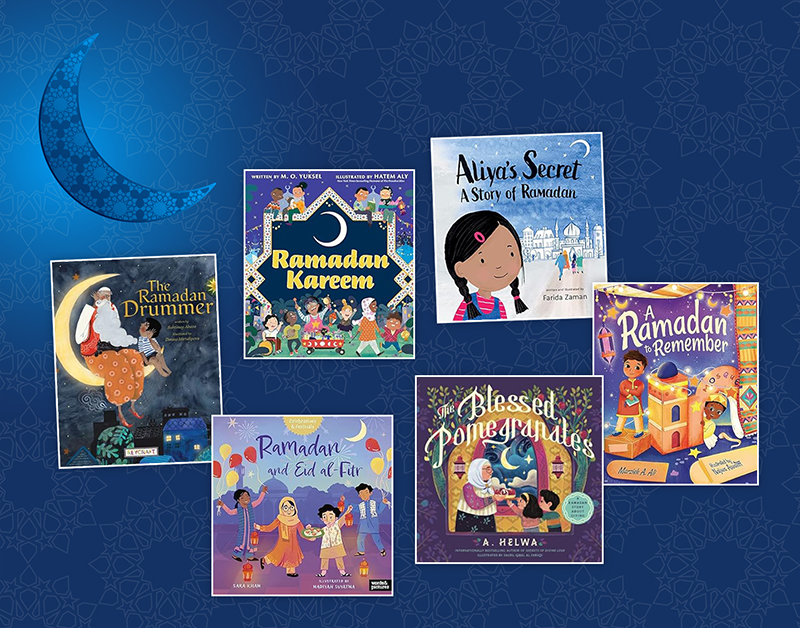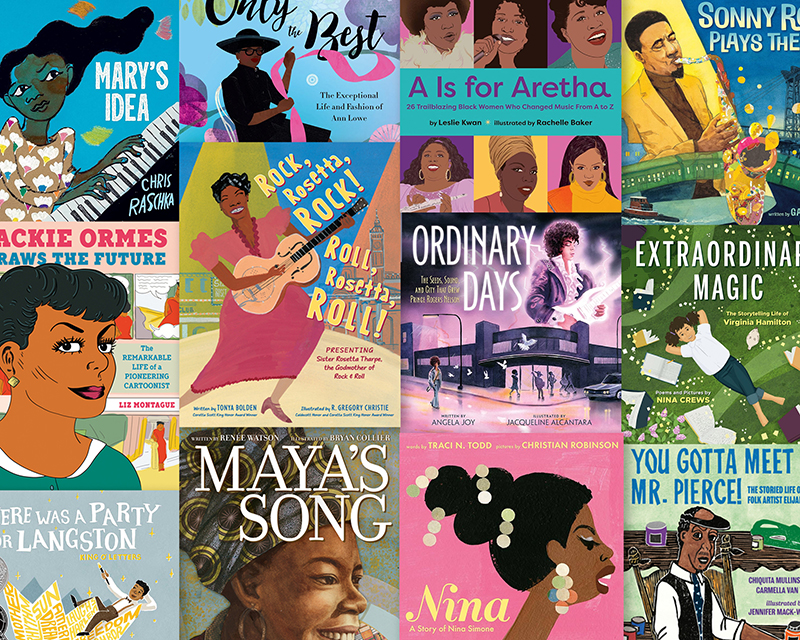Frank and Lucky Get Schooled
Written and Illustrated by Lynne Rae Perkins
Published in 2016 by Greenwillow Books
ISBN 978-0-06-237345-8
Grades K-6
Book Review
Take a romp through the school disciplines with Frank and his exuberant dog, Lucky. In this innovative picture book, Newbery award winning author Lynne Rae Perkins sends a strong message: opportunities to learn are all around us, all the time. After a particularly difficult day (wrong side of the bed, broken shoelace, spilled juice, flubbed soccer game…), Frank’s parents decide “today might be the day” to adopt a shelter dog. Frank meets Lucky, a joyful black lab: “Both of them were just pups. They had a lot to learn.” Their adventures are relayed through engaging text alongside pen and ink and watercolor images that incorporate panels and speech bubbles. Perkins uses the school subject areas as a device to highlight all the concepts and facts that Frank and Lucky explore while having fun together. For example: wondering about skunks leads to learning about chemistry; sharing a bed involves proportions and fractions; leaving a chair pulled out from a table that holds a cake prompts an historical investigation; observing a silhouette against the horizon leads to art and a study of perspective; and swimming, fields, and snails are all about geography, of course. The pacing of this clever picture book is, paradoxically, both rapid and reflective and offers opportunities for multiple readings and layered interpretations. Throughout the book, Perkins emphasizes the relationships among the disciplines. Teachers and students alike will be inspired by the conclusion that “everything had a lot of everything else in it [and] it would take a lot of time and exploring to learn how it all fit together.” Enjoy the exploration!
Teaching Ideas: Invitations for Your Classroom
Grades K-6
Learning Across the Day. After reading Frank and Lucky Get Schooled, engage your students in conversation about the many ways they are learning throughout their day. Ask your students to pay attention over the course of the weekend to the activities that they participate in and how/what they learn. Provide students with a graphic organizer to record their observations. On Monday, invite students to share their learning with each other in small groups. Look for connections and variations. Come together for a whole group discussion and consider making a class book to which each student contributes a page, writing and illustrating their outside of school learning.
ADVERTISEMENT
ADVERTISEMENT
What are Your Favorite Subjects? Invite your students to consider the topics that they are most curious about. Begin by asking students to list their interests on one side of a two column note-making graphic organizer. Ask students to leave large spaces as they list 3 -5 interests down the left hand column. After students have an opportunity to talk about a few of the items that they have lists, ask them to consider how they could learn more about each topic. You may want to have a discussion about the process of learning and different vehicles for learning, such as: first hand exploration, research and reading, talking with experts, etc. Then ask students to use the right hand column to make notes about how they could learn more about each of their topics. Next, guide students to pick a topic and put the plan into action!
Text Set Exploration: The Process of Learning. Read Frank and Lucky Get Schooled as part of a text set that focuses on the process of learning. Work with you school or public librarian to gather a collection of picture books that focus on how people learn (in various ways). Some titles from our blog to get you started include: On a Beam of Light, Last Stop on Market Street, Ideas Are All Around, Steamboat School, Rain School, and An A From Miss Keller. As you read through the texts in whole group or small groups, create an anchor chart to record students’ observations across the texts. Categories for this anchor chart might include: Main Character, What is Being Learned?, Where Does Learning Take Place?, What Supports the Learning Process?, Who Supports the Learning Process?, Take away Ideas. Following this exploration, invite your students to write their own memoir about a learning event/moment in their lives. Depending on the age and abilities of your students their narratives could be recorded orally, in writing, or through illustration.
Text Set Exploration: Adopted Dogs. Because Frank and his family adopts Lucky from a local shelter, this picture book is well suited to a text set on rescue/ adopted dogs. Texts in this text set might include novels Wish by Barbara O’Connor, Rain Reign by Ann M. Martin, Waylon: One Awesome Thing by Sara Pennypacker; nonfiction titles such as Stay: The True Story of Ten Dogs, Dog Heroes: Shelter Dogs, and No Shelter Here: Making the World a Kinder Place for Dogs; along with digital texts such as those found on the website of the American Society for the Prevention of Cruelty to Animals. Extend this text set exploration by learning more about dog rescue efforts in your community.
Author Study. Lynne Rae Perkins is the Newbery award winning author of both picture books and novels. An exploration of her website, which includes a blog, offers students insight into her creative process. Follow with a reading of her picture books and/or novels (depending on the age of your students). As students engage with her text and illustrations ask them to make notes about the patterns they see in writing style, character development, themes, and illustrations, making particular note of the relationship between text and illustrations across her body of work.
Grades 2-6
Close Reading: Maxims About Learning. A close reading of Frank and Lucky Get Schooled reveals the author’s insights into the processes of learning and the nature of disciplinary literacies. Invite your students to reread the text and to make note of lines in which Perkins reflects on learning and the disciplines – these lines can be found throughout the text; examples include: “Science is when you wonder about something, so you observe it and ask questions about it and try to understand it” and “sometimes in History there are different versions of what really happened, depending on who is telling the story.” After recording these lines, ask students to reflect on their meaning – offering additional examples or rewriting the lines in their own words. Once you have compiled a listing, ask students to add their own reflections on learning and learning across the disciplines. To offer more scaffolding for younger students, consider making anchor charts with the headings: Math is….., Science is…, etc.
ADVERTISEMENT
ADVERTISEMENT
Narration. Lynne Rae Perkins adopts less commonly used narrative style in Frank and Lucky Get Schooled, employing both third and second person narration. Reread the text and invite students to notice when the narration shifts – at what moments does the author directly address the reader as ‘you’ (second person narration)? Discuss this choice as author’s craft and invite students to examine narration styles across of a collection of picture books. Texts such as Snappsy the Alligator, This is Not a Picture Book, School’s First Day of School, Chloe and the Lion, The Book With No Pictures, The Watermelon Seed, and We Are in a Book!, offer additional interesting examples of variety in narration. After reviewing many examples, invite students to try writing a pieces that incorporates more than one kinds of narration.
Animal Learning and Communication. What is Lucky really thinking and learning? Use Frank and Lucky Get Schooled as a launching point for an inquiry into what is known about animal learning and animal communication. Divide students up into small groups and ask them to choose (or assign) an animal to investigate (consider: dogs, dolphins, primates, birds, elephants, horses). Use a variety of texts resources online and in your library (look for titles such as: Nancy Castaldo’s Beastly Brains and Donna Janell Bowman’s Step Right Up: How Doc and Jim Key Taught the World About Kindness) to begin to understand what is known about how these animals think, learn, and communicate. Students should share their findings through multimedia presentations or reports.
Multigenre Picture Books. Frank and Lucky Get Schooled is an example of a multigenre picture book. The narrative about Frank and Lucky is interspersed with brief moments of expository text and the illustrations include diagrams and maps. Discuss this blending of the genres with your students and offer them additional examples of multigenre picture books, such as the well known Magic School Bus books by Joanna Cole books and more recently published titles such as Some Writer: The Story of E.B. White by Melissa Sweet. Invite your students to try their hand at creating a multi genre piece of writing. For more on this, please see Tom Romano’s professional resources.
Grades 4-6
Critical Literacy
“Learning” in School. Frank and Lucky Get Schooled emphasizes the myriad opportunities there are for learning outside of school (while using the framework of the traditional school structures to offer examples). The book can be used as a launching point for a discussion of how learning happens inside your school setting. Invite your students to consider the structures, materials, and activities that shape their learning experiences at school. Students can share their thoughts on the efficacy of their learning experiences, identifying what is currently working well for them, and making suggestions for how structures, materials, and activities could be adapted to better meet their learning needs. Guide students to take their feedback and suggestions to your school council, a school leadership team, or at a faculty meeting.
Further Explorations
Online Resources
Author’s Website
ASPCA
Read Writing Think: Reading and Analyzing Multigenre Texts
http://www.readwritethink.org/resources/resource-print.html?id=293
Tom Romano: Blending Genre, Altering Style
http://www.heinemann.com/products/0478.aspx
Books
Barnett, M. (2012). Chloe and the lion. Ill. by A. Rex. New York: Disney/Hyperion.
Bowman, D.J. (2016). Step right up: How Doc and Jim Key taught the world about kindness. Ill. by D. Minter. New York: Lee & Low.
Castaldo, N. (2017). Beastly brains: Exploring how animals think, talk, and feel. Boston: Houghton Mifflin Harcourt.
Hopkinson, D. (2016). Steamboat school. Ill. by R. Husband. New York: Disney/ Hyperion.
Polacco, P. (2015). An A from Miss Keller. New York: G.P. Putnam’s and Sons.
Martin, A.M. (2015). Rain reign. New York: Feiwel and Friends.
Novak, B.J. (2014). The book with no pictures. New York: Dial.
O’Connor, B. (2016). Wish. New York: Farrar, Straus, & Giroux.
Pizzoli, G. (2013). The watermelon seed. New York: Disney/ Hyperion.
Pennypacker, S. (2016). Waylon: One awesome thing. New York: Disney/ Hyperion.
Rex, A. (2016). School’s first day of school. Ill. by C. Robinson. New York: Roaring Brook Press.
Rumford, J. (2010). Rain school. Boston: Houghton Mifflin.
Ruzzio, S. (2016). This is not a picture book. San Francisco, CA: Chronicle.
Stead, P.C. (2016). Ideas are all around. New York: Roaring Brook Press.
Sweet, M. (2016). Some writer: The story of E.B. Lewis. Boston: Houghton Mifflin Harcourt.
Willems, M. (2010). We are in a book! New York: Hyperion Books for Children.
Filed under: Fiction, Fiction Picture Books, Picture Books
About Erika Thulin Dawes
Erika is a professor of language and literacy at Lesley University. A former classroom teacher, reading specialist, and literacy supervisor, she now teaches courses in children’s literature, early literacy, and literacy methods. Erika is the co-author of Learning to Write with Purpose, Teaching with Text Sets, and Teaching to Complexity.
ADVERTISEMENT
ADVERTISEMENT
SLJ Blog Network
2024 Books from Pura Belpré Winners
In Memorium: The Great Étienne Delessert Passes Away
Winnie-The-Pooh | Review
Parsing Religion in Public Schools
Finding My Own Team Canteen, a cover reveal and guest post by Amalie Jahn
ADVERTISEMENT

